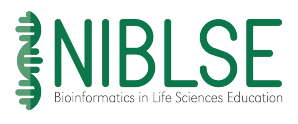Resources
Bioinformatics: Food Detective – a Practical Guide
Author(s): Stevie Bain1, Daniel Barker1, Teresa Attwood2
1. Institute of Evolutionary Biology, School of Biological Sciences, University of Edinburgh, Edinburgh (UK) 2. Department of Computer Science, The University of Manchester, Oxford Road, Manchester (UK)
670 total view(s), 124 download(s)
Description
This Practical Guide in the Bringing Bioinformatics into the Classroom series introduces the idea of computers as tools to help understand aspects of biology. In particular, it looks at how DNA sequences can be used to identify specific organisms, why this is important in the food industry, and how this can be used to help detect food fraud. Analyses are run online using sequence data from the 4273pi project website: 4273pi.org.
Specifically, this Guide introduces a popular Web-based tool for searching biological sequence databases, and shows how to identify different species based on their specific DNA sequences – their ‘barcodes’. On reading the Guide and completing the exercises, you will be able to:
- explain what is meant by DNA barcoding;
- search biological sequence databases using the online program BLAST;
- judge the reliability of database-search results in terms of their statistical significance; and
- evaluate the biological implications of search results with reference to food safety.
Cite this work
Researchers should cite this work as follows:
- Bain, S., Barker, D., Attwood, T. (2020). Bioinformatics: Food Detective – a Practical Guide. Network for Integrating Bioinformatics into Life Sciences Education, QUBES Educational Resources. doi:10.25334/VKS0-KA93
